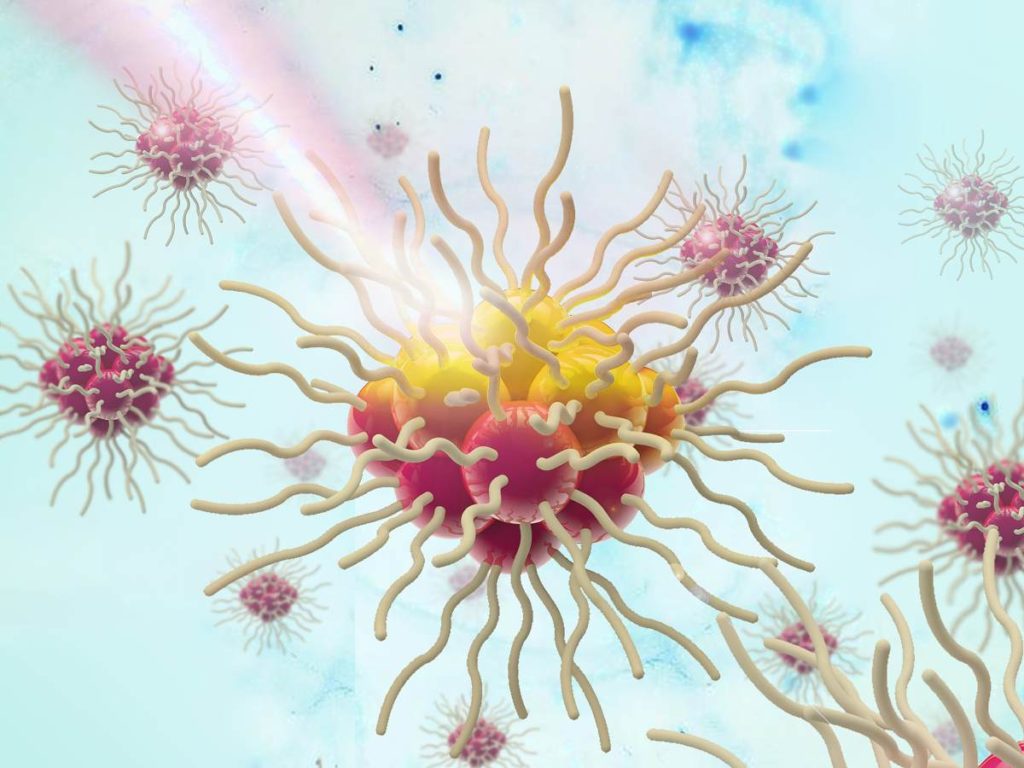Scientists developed highly efficient nanomaterial for theranostic application
Scientists from the Czech Advance Technology and Research Institute (CATRIN) of Palacký University, alongside colleagues from the University of Patras and Charles University in Prague, have developed condensed iron oxide nanocrystals with very high photoconversion efficiency. This amounts to an unprecedented 70 per cent, surpassing not only current iron-based photothermal agents but also the efficiency of gold nanostructures. The material thus represents a sustainable, robust and spin-active theranostic nanoplatform.
Nanoassemblies acting as photothermal agents, especially those operating in the near-infrared (NIR) transparent optical window of tissue, are strong candidates for photothermal cancer therapy and in vivo deep tissue imaging.
“Magnetic iron oxide-based systems are being introduced as biocompatible and multi-functional nanoplatforms, but their photothermal conversion efficiency is significantly lower compared to reference photothermal agents such as gold, silver and carbon dot nanostructures. A possible route to enhancing the NIR absorption of magnetic iron oxide nanoparticles, and thus the heat dissipation through non-radiative relaxation pathways, appears to be controlled clustering by bridging pre-synthesized nanocrystals. These pathways, however, reached only a 30 to 40 percent efficiency,” said the co-author of the paper published in ACS Applied Materials & Interfaces Aristides Bakandritsos.

To overcome these drawbacks, scientists used the structure of condensed-clustered iron oxide assemblies (Chem. Mater. 2014, 26, 2062), in which the nanocrystals were grown and clustered epitaxially in situ, reaching an unprecedented photoconversion efficiency of 70 percent. “These highly effective NIR photothermal agents, made from commonly available elements, are also impervious to high laser flaxes. This is another key advantage compared to gold nanostructures, which are prone to melting under such irradiation. This set of properties may encourage further use of these nanomaterials in the field of nanomedicine,” explained the first author of the article, Argiris Kolokithas-Ntoukas.
Another important benefit of the work is the simple and cost-effective self-assembly route for PEG-functionalization of the condensed-clustered iron oxide assemblies in aqueous conditions, i.e. overcoming the need for organic solvents and toxic conjugation agents typically used for the same task. “In addition, the bi-functional polymeric canopy selected for surface functionalization simultaneously provided binding sites for anchoring strong, near-infrared absorbing and fluorescent dye. This enabled in vivo optical and photoacoustic imaging at 800 nm, i.e. in the transparent optical window of tissue. Combining these properties with the nanocrystals’ capability for magnetic resonance imaging has confirmed the potential of the developed nanoassemblies as multimodal tracers, combining the benefits from diverse imaging modalities,” concluded Bakandritsos.


